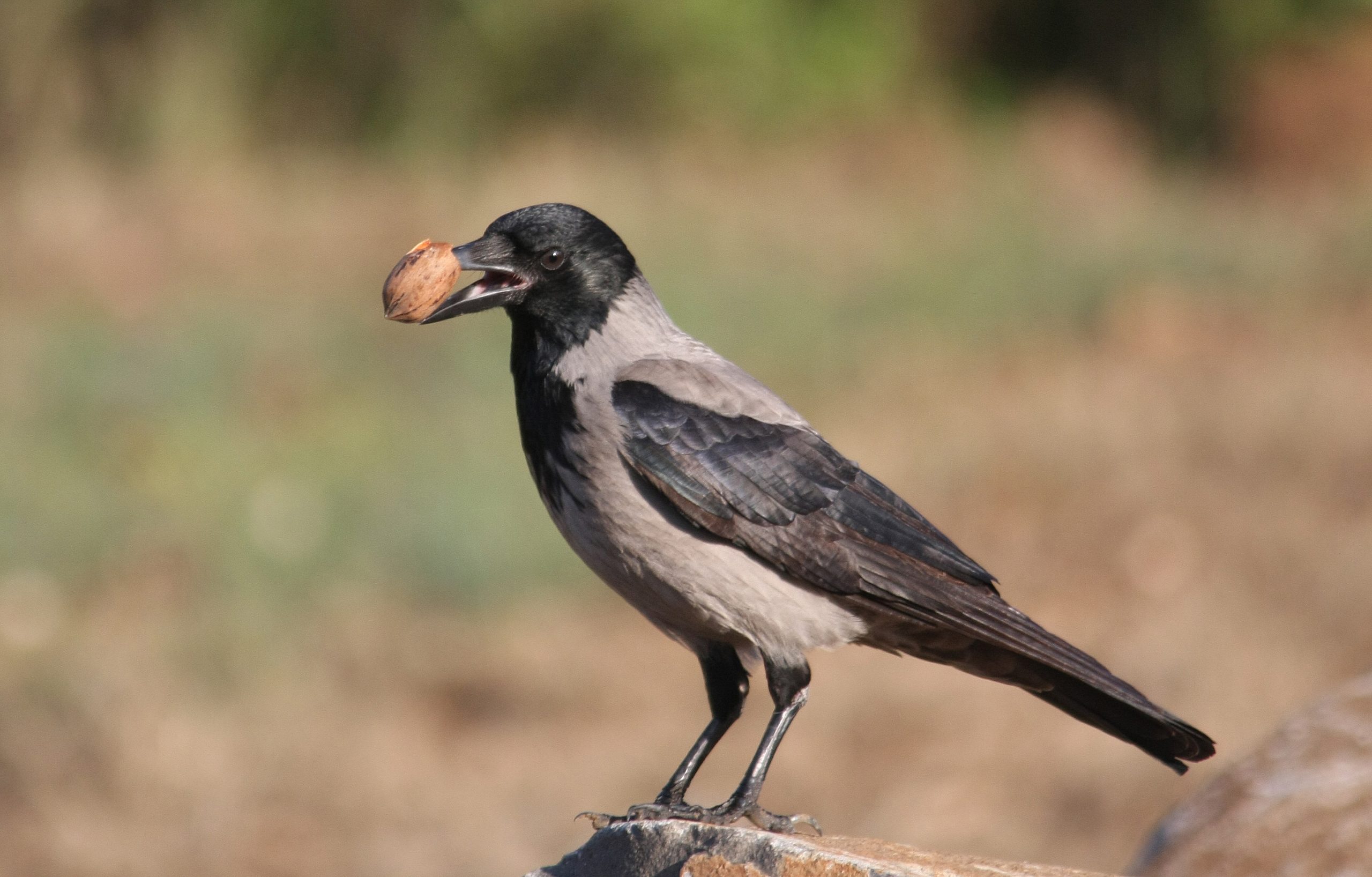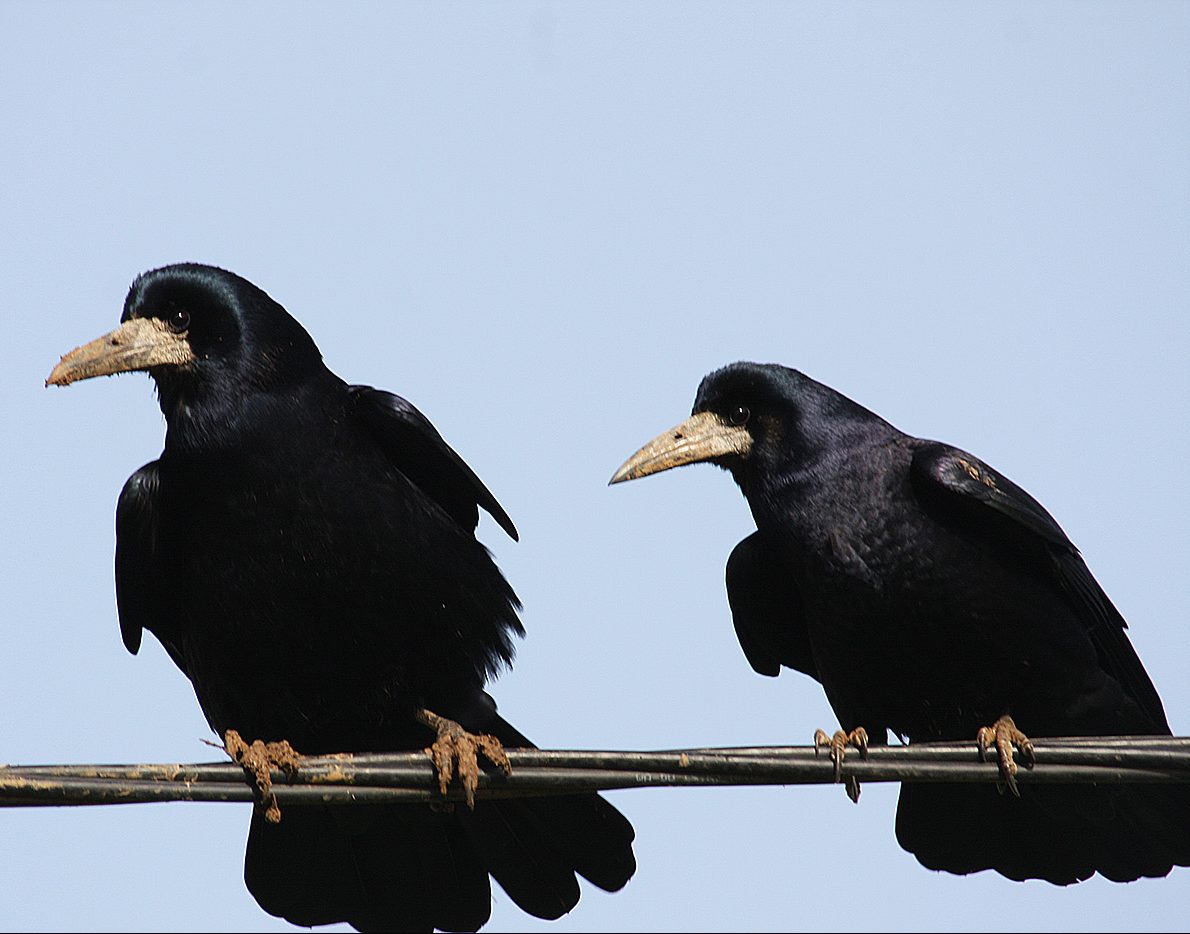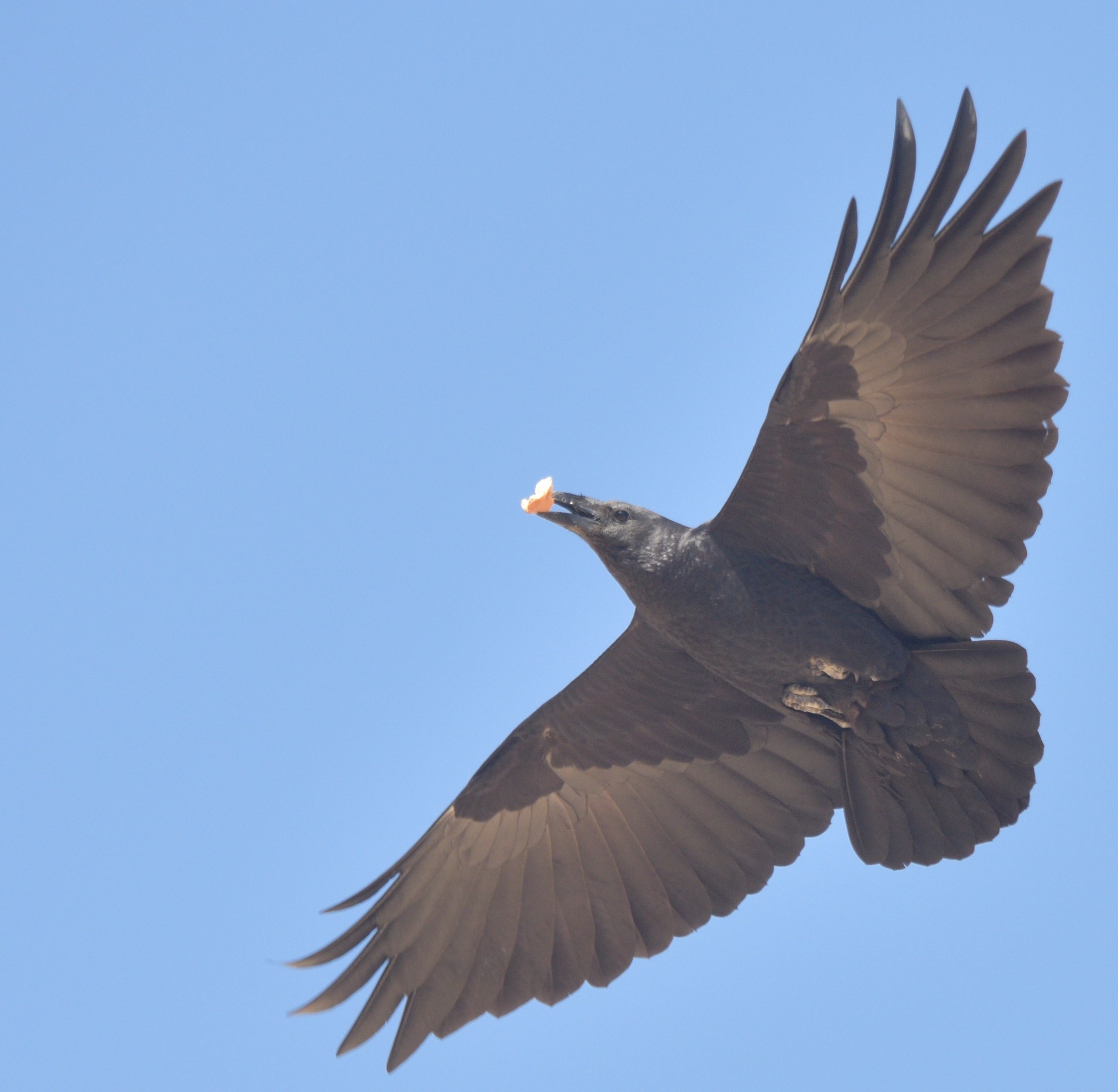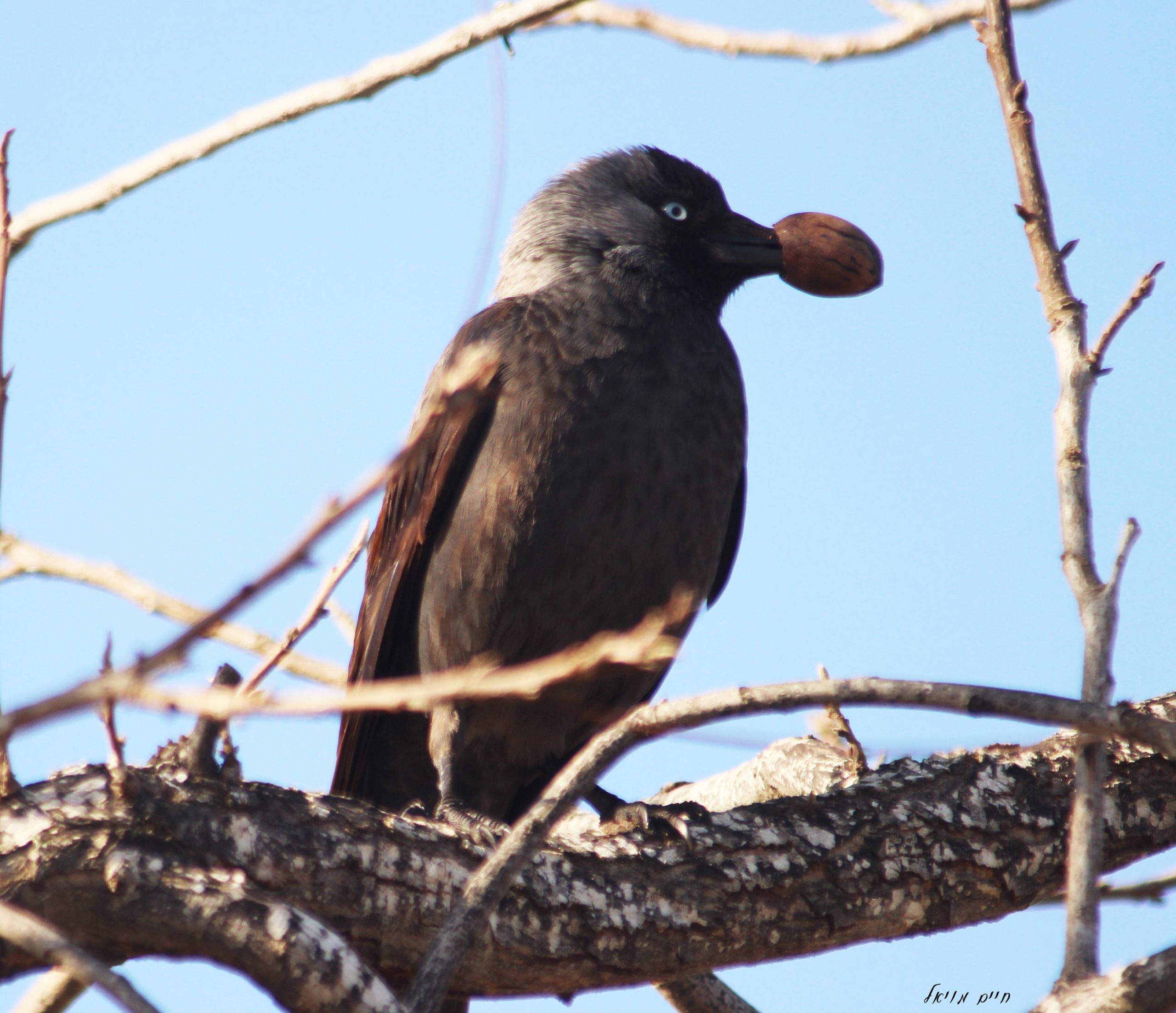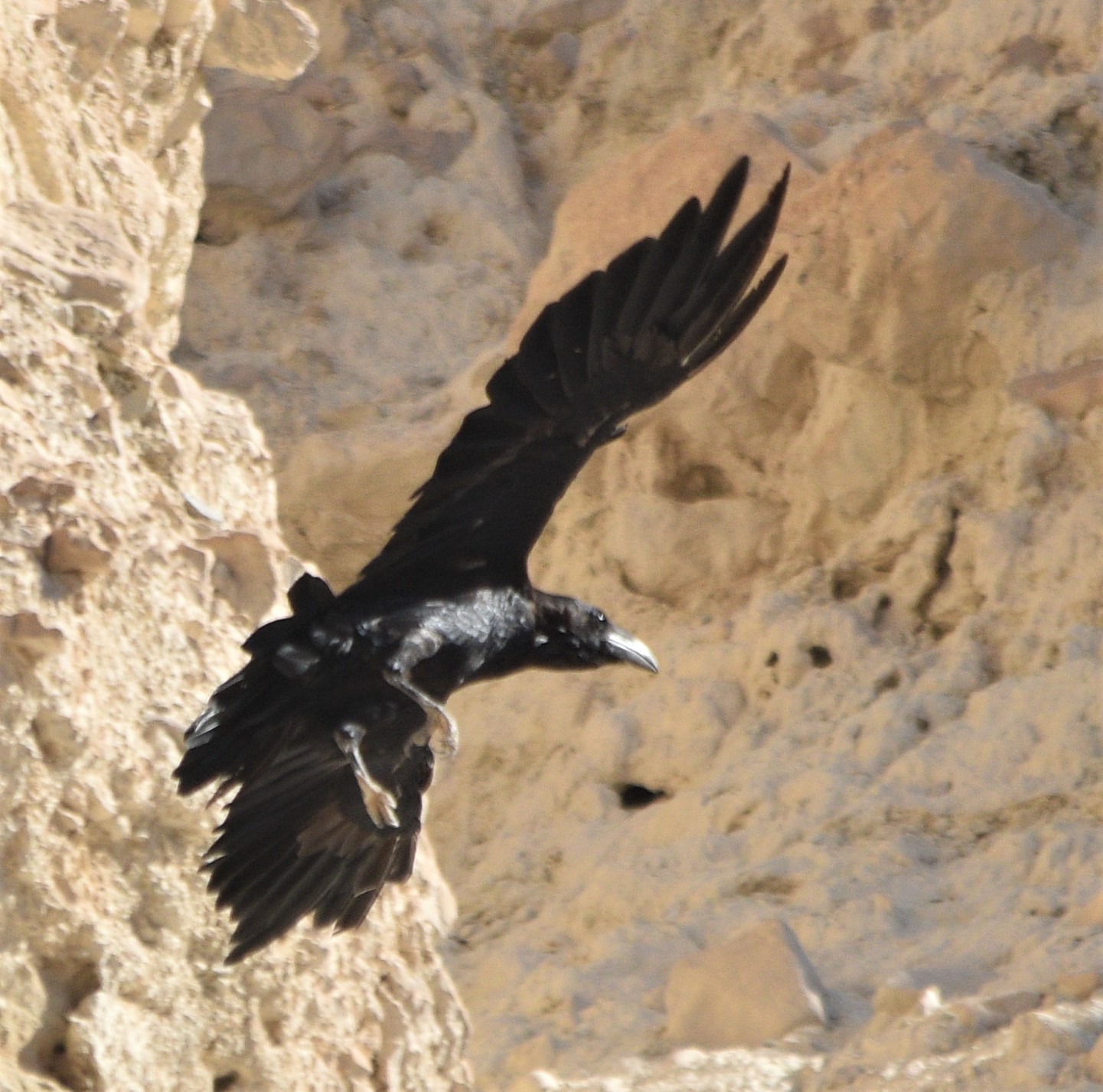Raven, ערב (Orev), Corvus
Back to FaunaImage gallery
Biblical data
Introduction
The ערב (raven) appears ten times in the MT and twice more in the Septuagint and Vulgate (Jer 3:1; Zeph 2:14) (see History of Identification). It is most well known from two narratives—Noah after the flood (Gen 8:7) and Elijah in Wadi Cherith (1 Kgs 17:4, 6)—that recognize an interaction between humans and this bird. An unclean bird (Lev 11:15; Deut 14:14), it is frequently depicted as an omnivore and bird of prey (e.g., Isa 34:11; Prov 30:17).
Distribution within the Bible
Narratives: In the Flood story (Gen 8:7), the ערב is the first bird Noah sends out of the ark to search for land. In 1 Kgs 17:4, 6, ravens sustain Elijah in the desert.
Legal: The ערב is an unclean bird, Lev 11:15; Deut 14:14.
Prophetic literature: The raven is portrayed as a bird of prey that occupies desolated settlements in a judgment prophecy, Isa 34:11.
Writings: Ps 147:9, ravens (בני ערב) occur in parallel to בהמה (beast); and else in Job 38:41; Prov 30:17; Cant 5:11.
Parts, Elements, Features that Are Specified in the Bible
Color. The beloved’s hair is compared to the black raven (Cant 5:11).
Social Habits. Ravens like company, a flock sustaining Elijah in the desert (1 Kgs 17:4, 6).
Interaction with Human Beings. The two narratives (Gen 8 and 1 Kings 17) point to interaction between human beings and ravens, although YHWH’s command in the latter text is portrayed as miraculous in nature.
Habitat. Ravens require dry ground for living, Gen 8:7 illustrating this fact via the notation that the bird Noah sent out kept going out and returning to the ark until the flood had receded.
Isa 34:11 indicates their custom of inhabiting deserted human settlements together with owls, hawks, and hedgehogs (קאת, קפוד, ינשוף). Prov 30:17 evinces that they live by rivers (ערבי נחל). The raven’s close connection with human settlements is also a function of their diet (see below).
Diet. The ravens’ role in providing Elijah with bread and meat twice a day (1 Kgs 17:6) may reflect their omnivorous nature and residence close to or within human societies. In Job 38:41, the raven and its young symbolize the search for food, their hunger and food foraging prompting them to appeal to God for help. Their predatory character is also indicated by their unclean status in biblical law (Lev 11:15; Deut 14:14).
Function in Context
Five of the incidences of ערב occur in realistic contexts: Gen 8:7; Lev 11:15; Deut 14:14; and 1 Kgs 17:4, 6. The only figurative usage is in the prophecy of ruin and desolation in Isa 34:11.
The raven is adduced twice in lists of natural substances and / or animals whom YHWH sustains (Ps 147:9; Job 38:41). Its real color serves as simile of beauty in Cant 5:11; and ערבי נחל appearing once in a proverb (alongside בני נשר), Prov 30:17.
Pairs and Constructions
Prov 30:17: ערבי נחל in parallel with בני נשר.
Isa 34:11: alongside.קאת, ערב, קפוד
LXX / Vulg. to Zeph 2:14: ערב for MT חרב. This verse appears to be influenced by Isa 34:11 (cf. the קאת and קפוד adduced therein).
Contributor: Prof. Dalit Rom-Shiloni, DNI Bible Project Leader, Department of Biblical Studies, Tel Aviv University, Israel
History of Identification
Identification History Table
| Hebrew | Greek | Aramaic | Syriac | Latin | Arabic | English | |||||
| Reference | MT | LXX | Revisions | Targumim | Peshitta | Vulgate | Jewish | Christian | KJV | NRSV | NJPS |
| Gen 8:7 | עֹרֵב | κόρακα
LSJ: raven (Corvus corax) |
— | O, GTD: עוֹרְבָא
PJ, N: עורבא S: — CAL: raven
|
ܥܘܪܒܐ
CAL: raven |
corvum
LS: raven |
Saadia:
גראב |
الغراب
= raven |
raven | raven | raven |
| Lev 11:15 | עֹרֵב | κόρακα | — | O: עוֹרְבָא
PJ: עורבא N: עורב׳/ ערבה S: ערבה |
ܢܥܡ݁ܐ
= Ostrich |
corvini
LS: raven |
غراب | raven | raven | raven | |
| Deut 14:14 | עֹרֵב | κόρακα | — | O: עוֹרְבָא
PJ: בני עורבא N: עורבא S: ערבה |
ܢܥܡ݁ܐ
= Ostrich |
corvini | غراب | raven | raven | raven | |
| 1 Kgs 17:4 | עֹרְבִים | κόραξιν | — | עוֹרְבַיָא | ܥܘܪ̈ܒܐ (pl.) | corvis | الغربان | ravens | ravens | ravens | |
| 1 Kgs 17:6 | עֹרְבִים | κόρακες | — | עֹרְבַיָא | ܥܘܪ̈ܒܐ݁ (pl.) | corvi | الغربان | ravens | ravens | ravens | |
| Isa 34:11 | עֹרֵב | κόρακες | — | עוֹרְבִין | ܢܥܒ̈ܐ݂(pl.) | corvus | الغراب | raven | raven | ravens | |
| Ps 147:9 | לִבְנֵ֥י עֹרֵב | καὶ τοῖς νεοσσοῖς τῶν κοράκων | — | לבני עורבא | ܘܠܒܢ̈ܝ (pl.) ܢܥܒ̈ܐ݂ | filiis corvi | لفراخ الغربان | ravens | ravens | raven | |
| Job 38:41 | עֹרֵב | κόρακι | — | עורבא | ܥܘܪܒܐ | corvo | الغراب | raven | raven | raven | |
| Prov 30:17 | עֹרְבֵי־נַחַל | κόρακες ἐκ τῶν φαράγγων | — | עורבי דנחלא | ܥܘܪ̈ܒܐ (pl.) ܕܢܚܠܐ | corvi de torrentibus | غربان الوادي | ravens | ravens | ravens | |
| Song 5:11 | עוֹרֵב | κόραξ | — | עורבא | ܥܘܪ̈ܒܐ (pl.) | corvus | الغراب | raven | raven | raven | |
| Jer 3:2 | כַּעֲרָבִ֖י בַּמִּדְבָּר | ὡσεὶ κορώνη ἐρημουμένη
LSJ: crow |
A: Ἄραψ = Arab | עַרבָאֵי
= Arab |
ܐܝܟ ܢܥܒ݂ܐ ܒܡܕܒܪܐ | quasi latro in solitudine
latro = robber |
كأعرابيّ في البرّيّة
= as an Arab in the desert |
Arabian | nomad | bandit | |
| Zeph 2:14 | חֹרֶב | κόρακες
LSJ: raven |
A, S: μάχαιρα = sword | חְרוּבוּ
= waste |
ܚܪܒܐ
= sword |
Corvus
= raven |
خراب
= desolation |
desolation | raven | raven | |
Discussion
The ancient translations almost unanimously agree that עֹרֵב denotes a raven. The Septuagint consistently translates the Hebrew with κόραξ (LSJ: raven (Corvus corax). In Jer 3:2 (MT:(כַּעֲרָבִ֖י בַּמִּדְבָּר , LXX reads כערב במדבר and uses κορώνη “crow.”
The Targumim regularly employ עוֹרְבָא.
The Peshitta alternates between the equivalent ܥܘܪܒܐ (ˁwrbˀ) and ܢܥܒ̈ܐ݂ (nˁbˀ). The latter—which occurs only in the Syriac dialect of Aramaic—is used by the Peshitta to translate also the Greek κόραξ “raven” (Luke 12:24) and κορώνη “crow” (Epistle of Jeremiah 53) and is understood to mean “crow.”
The Vulgate renders עֹרֵב as corvus and, on two occasions, corvinus—both meaning “raven.”
The Arabic translations use غراب (gurāb) and the pl. غربان (girbān); as already Saadia: גראב (gurāb, Gen 8:7).
LXX Zeph 2:14 (followed by Vulg.): ערב for MT חרב. The references to קאת and קפד suggest the influence of Isa 34:11 here.
Contributor: Dr. Raanan Eichler, Department of Bible Studies, Bar Ilan University

